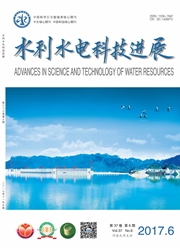

 中文摘要:
中文摘要:
为了研究内部微裂纹等初始缺陷对混凝土强度的影响,在细观层次上将混凝土看作由粗骨料、砂浆、界面和界面初始缺陷组成的四相复合材料,建立了考虑界面初始缺陷的混凝土细观数值模型来预测混凝土单轴抗拉强度,讨论分析了界面初始缺陷分布和界面初始缺陷含量对混凝土单轴抗拉强度的影响。数值模拟结果表明:界面初始缺陷分布对混凝土的单轴抗拉强度几乎没有影响;界面初始缺陷含量对混凝土强度影响较大;混凝土的单轴抗拉强度随着界面初始缺陷含量的增大而减小,当界面过渡区的初始缺陷含量从10%增大到50%时,试件的抗拉强度由基准试件强度的94%下降到约60%。
 英文摘要:
英文摘要:
In order to investigate the influences of initial defects, such as the internal tiny cracks, on the concrete strength, concrete was considered to be a four-phase composite composed of coarse aggregate, mortar matrix, interfacial transitional zones ( ITZs) , and initial interfacial defects at the meso-level, and a numerical model for mesoscale modeling of concrete, considering initial interfacial defects, was developed to predict the uniaxial tensile strength of concrete. The influences of the initial interfacial defect distribution and the amount of defects on the uniaxial tensile strength of concrete are discussed. Results show that the initial interfacial defect distribution has little influence on the uniaxial tensile strength, while the amount of initial interfacial defects has a large influence on the concrete strength. Results also indicate that the uniaxial tensile strength decreases with the increase of the amount of initial interfacial defects. When the volume fraction of initial interfacial defects in the transition zone increases from 10% to 50%, the uniaxial tensile strength of samples in comparison to the strength of samples without defects decreases from 94% to about 60%.
 同期刊论文项目
同期刊论文项目
 同项目期刊论文
同项目期刊论文
 期刊信息
期刊信息
